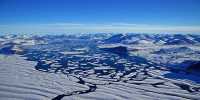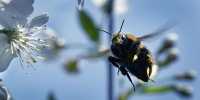This week, the Doomsday Vault will be accepting additional offerings from gene banks. The Svalbard Global Seed Vault, as it’s more officially known, is carved into the Arctic tundra and houses the world’s largest collection of agricultural biodiversity. It was established with the objective of securing the world’s food supply by providing seed gene banks around the world with safe, free, and long-term storage. Its frigid position is critical to this goal, since it represents a storage site that is relatively cold (but not immune to climate change) when compared to seedbanks in the Southern regions, where the majority of its collection originates.
According to Reuters, new shipments of seeds are arriving from gene banks in Sudan, Uganda, New Zealand, Germany, and Lebanon, bringing the total number of seed samples in the vault to over 1.1 million, representing roughly 6,000 plant species. In order to secure its contents from the outside world, the vault only opens a few times a year. As a result, the next delivery marks a significant milestone in the Doomsday Vault’s history.
Millet, sorghum, and wheat are among the varieties scheduled to be added to Svalbard’s vast seed collection, which will act as backup supplies for the original gene banks. Despite its Hollywood moniker, the vault is primarily concerned with preserving plant genetic variety in order to safeguard the world’s food supply in the future. Wheat is one of three key crops that provide for nearly 40% of the world’s calories, therefore its recent accession to the vault will be critical. Maize and rice are the other two.
“While the Seed Vault may have a role in the event of a global catastrophe, its value is thought to lie much more in providing back-up to individual collections in the event that the original samples, and their duplicates in conventional gene banks, are lost due to natural disasters, human conflict, changing policies, mismanagement, or any other circumstances,” the Svalbard Global Seed Vault’s website states.
However, in the case of a global disaster, the vault can be used to provide a safe haven for Earth’s plant species if something goes wrong on the surface. Researchers from the University of Arizona were so intrigued by the concept that they suggested the Moon as a possible location for a life vault. Granted, with lava tubes that resemble the Svalbard Vault but at a distance that the climate problem can’t quite reach, our cool and tranquil Moon wouldn’t be the worst place to be. Did they, however, consider the possibility of Moonfall?














